On the dinosaur trail in Villa de Leyva

A version of this story first appeared in The City Paper in 2015.
Villa de Leyva is five hours drive/bus north of Bogotá. Fossil and dinosaur activities are great fun for kids.
For related posts see The Great Sloth Slaughter

Every generation re-discovers dinosaurs, so I am hardly shocked when my daughter starts dishing up fossil facts at the dinner table. ´Dad, did you know Apatosaurus was a Jurassic herbivore?´ ´Actually, no. Now finish your vegetables´, I reply.
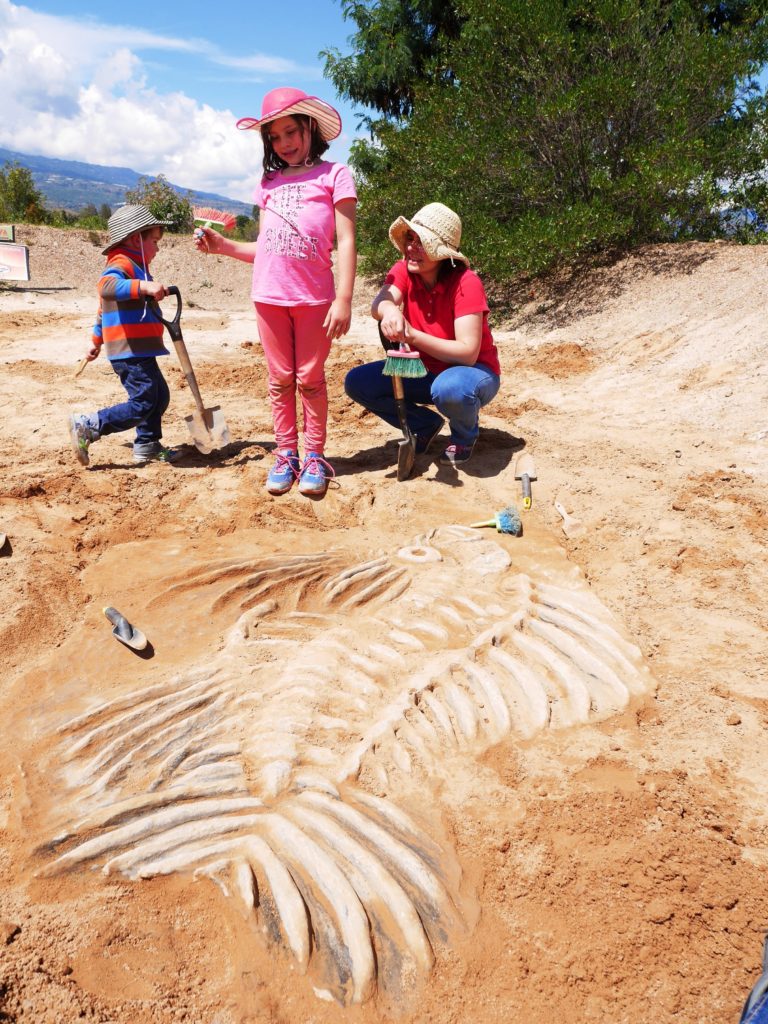
But what does surprise me is that she has learned her Carboniferous from her Cretaceous (something I never managed to figure out) and is lecturing me on dinosaurs I have never heard of, such as Sauronitholestes, a feathery dinosaur, and Wannanosaurus, a dinosaur so small you can fit it in your suitcase. Maybe they just didn’t exist when I was a kid. Whatever happened to Brontosaurus and good old Tyrannosaurus Rex? Buried in an avalanche of trendy new dinos I suspect. Even fossils are subject to fashion, it seems.
What better way to scratch this new itch than a trip to the Fossil Trail of Villa de Leyva, set in a broad sunny valley three hours north of Bogotá in the department of Boyacá. The colonial town of Villa de Leyva is itself already steeped in history, and a major tourist destination, and the valley south of the town is dry and dusty with rugged range of exposed rock strata just like you might expect in and Colombia´s number one palaeontology site.
First stop is the Gondava, (also known as the Grand Valley of the Dinosaurs) where concrete dinosaurs rule the earth, or at least a small sun-baked hillside 6kms southwest of the town of Villa de Leyva. It is a rather tacky half-finished theme park, complete with zip-line and mini-golf course (at extra cost) and gets a roasting on Trip Advisor. A bored guide gives us a 40-minute tour over a trail that takes in few dozen dino dioramas of varying quality. There are a few good bits, particularly the ammonites floating in a green lake and a scary T Rex. The highlight is a fossil dig when we are let loose in a large sand pit to play palaeontologists. The kids go wild, discovering they can combine their fad for fossils with making sand castles at the same time. After an hour in the hot sun digging and brushing we have uncovered the bones of an ancient fish. Not satisfied, the kids start attacking another large fossil lurking beneath the sandy surface. We literally have to drag them away.
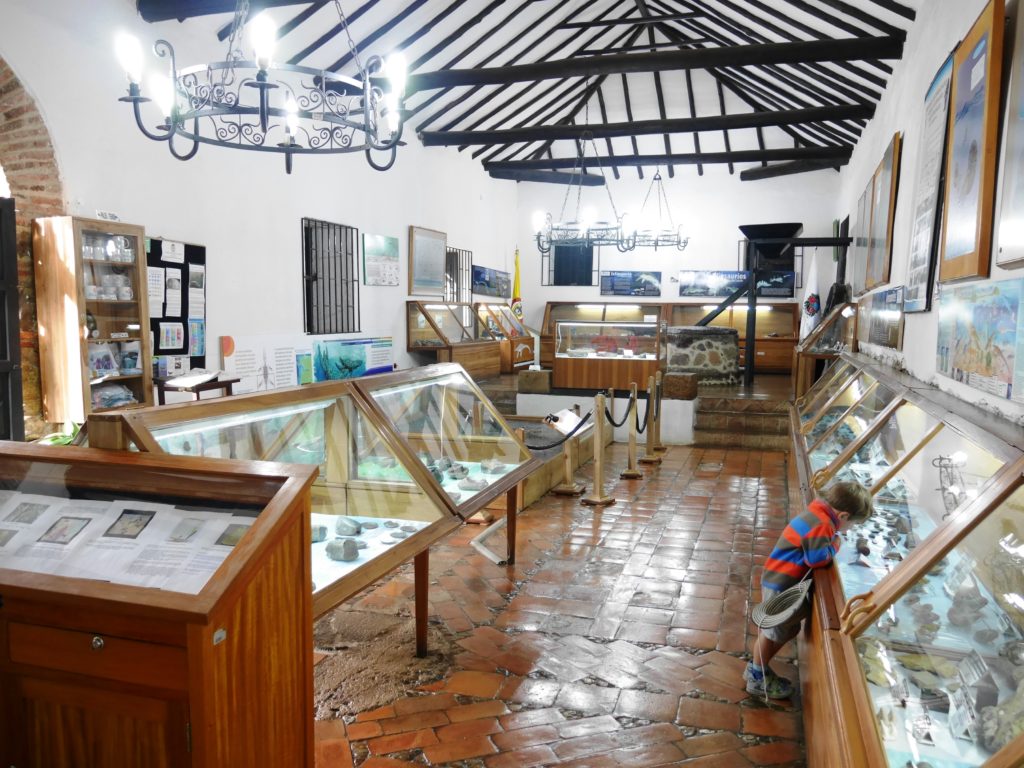
Next stop is the Palaeontology Museum of Villa de Leyva (Museo Paleontológico Villa de Leyva) set in a 400-year-old colonial house 15 minutes’ walk out of Villa de Leyva. Glass cases abound with ammonites, fossilised shellfish, and some bits of larger marine reptiles. The scientific data is well presented and quite detailed. A bit too detailed for the kids are yawning. Time to move on.
Back in Villa de Leyva town we get lucky and find an ancient giant anaconda, Titanaboa, coiled up in a colonial church. Titanaboa made world headlines after its discovery in 2012 and a full-size mechanized model has pride of place in the prestigious Smithsonian Institute in the US. This non-moving replica touring Colombia is part of a temporary display on global warming, which is ironic since the fossil snake was first found in the world’s largest coal mine, Cerrejón, in very north of Colombia, and its discovery has prompted scientists to up their estimate of ambient temperature of planet 50 million years ago by several degrees. Such large snakes could only have live in a very hot climate. Preventing their return seems like one good reason to keep the planet cool. There is a good exhibition of the giant snake in Bogotá at the Jose Royo y Gomez Geological Museum with complete skeletons of plesiosaurs and Pleistocene mammals (such as megatherium, the giant sloth, and a mastodon), it is part of Servicio Geologico de Colombia institute on the corner of the NQS and Calle 53, Bogota. It is open to the public on weekdays, and entrance is free.


Next day dawns bright and sunny at our colonial hotel. I wonder if the children’s fossil fascination has worn off, but no, they want more and luckily Villa de Leyva has two more sites on the list, both 4km southwest of the town. First up is The Fossil Museum (Museo El Fósil), which is kind of appropriate because it is based on just one fossil, but what a specimen; Kronosaurus, a 10-metre-long marine predator unearthed by a local farmer in 1977. Part of the fascination of this small museum is its construction over the original dig site. Thus the big beastie lies where it lay down to die in the Cretaceous period. Now 100 million years later we stand here gawping at it.
Across the road from El Fósil is the wonderful CIP, the Centro de Investigaciones Palenteológicas, a museum combined with a real working investigation laboratory, where scientists study real fossils. The displays are also the most varied and complete and our guide (herself a qualified technician) is so passionate about palaeontology that the kids are wide-eyed with excitement. She carefully explains the significance of Colombia and Villa de Leyva in the world-wide fossil scene, and as she talks I feel the jigsaw pieces fall together.
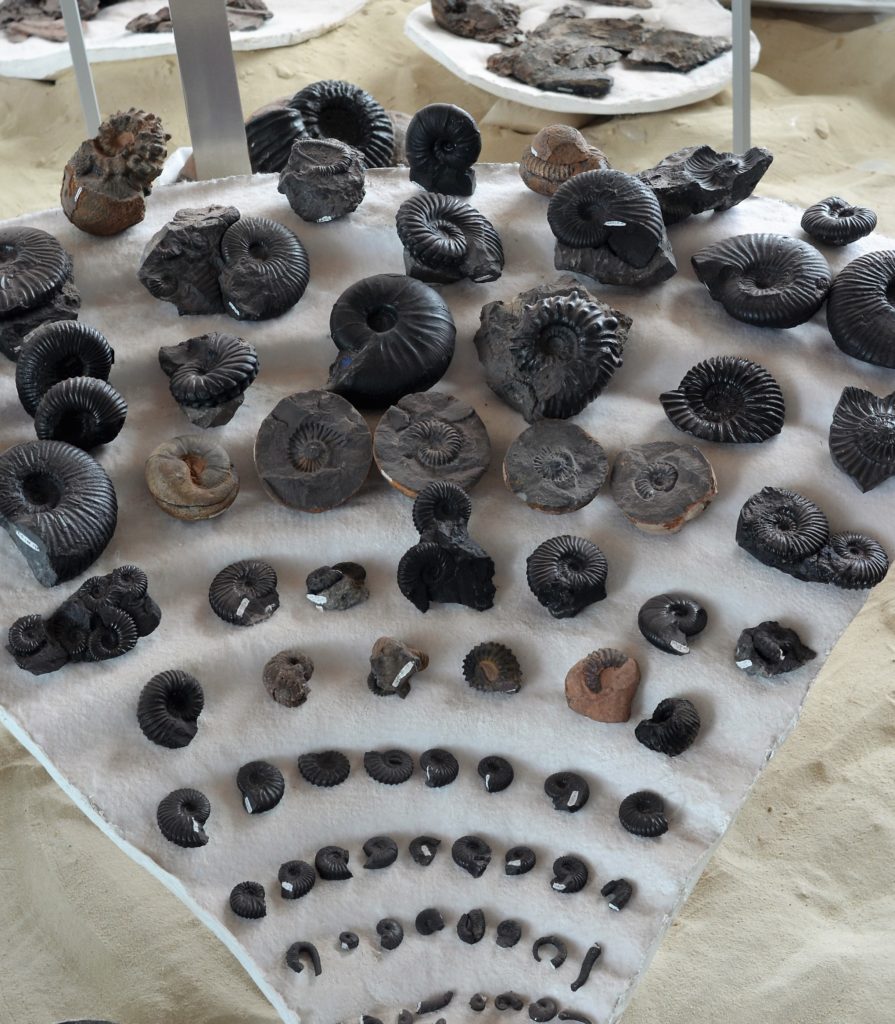
Most of the present-day Colombia was underwater in the Cretaceous era, a time of warm shallows seas. But the shifting tectonic plates were starting to push the land up to form what we know now as the Andes, and a lagoon formed in the fed by the mineral-rich mountain streams. This small fertile sea spawned the wondrous creatures of its age: the coiled ammonites, huge insect like trilobites, metre-long piranha-like fish, and sharks. Also came the huge marine reptiles, long-necked plesiosaurs, savage pliosaurs, giant turtles, and agile ichthyosaurs that were reptiles but resemble today’s marine mammals.
The sea levels fell, the land rose up, and the lagoon became an inland sea, eventually drying up to form the farmlands of Boyacá, with the marine fossils trapped beneath.
But not really dinosaurs, as my daughter points out. ´Dinosaurs lived on the land. These are marine reptiles.´ Technically, she is right, though on the size scale the largest pliosaurs are even more scary than their land-based cousins, growing to 15m long with jaws enough to chomp a family car. Chew on that T Rex!

Then our guide points out a huge thigh bone on display, the remains of a land-living brontosaurus-like creature recovered from a Boyacá farm, proving that the Cretaceous coastline was nearby and dinosaurs really did roam this corner of earth. Just that they are harder to find here than the marine reptiles.
So we did find a dinosaur after all, and a whole lot more, and head back to Bogotá both elated and humbled by our brush with pre-history. My daughter, sensing for the first time our own fleeting part in the ageless universe, sums it up: ´One day we’ll all be fossils too.´
Practical stuff
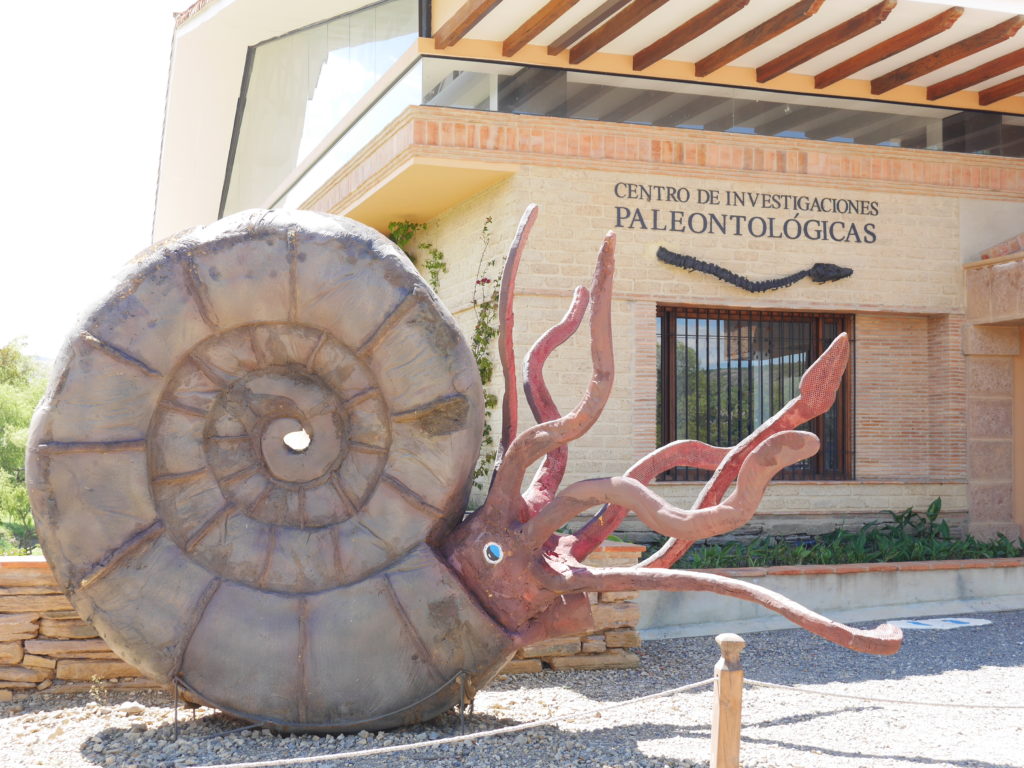
Villa de Leyva is a popular tourist town three hours north of Bogota and easily reached by car or bus, and accommodation is plentiful.
All sites mentioned above are easily accessible from the town of Villa de Leyva, you can walk to the Paleontological museum, and the other sites if you don´t mind hiking, or you can take a taxi or combine El Fósil and/or the CIP as part of a horse trek, which pass by the sites. Horse treks (cabalgatas) are advertised all over town and can easily be arranged by your hotel.
All the sites mentioned above open all week (except Paleontological Museum closes on Monday), check links above for times and entry fees. Allow a full weekend to see all sites with time to relax.
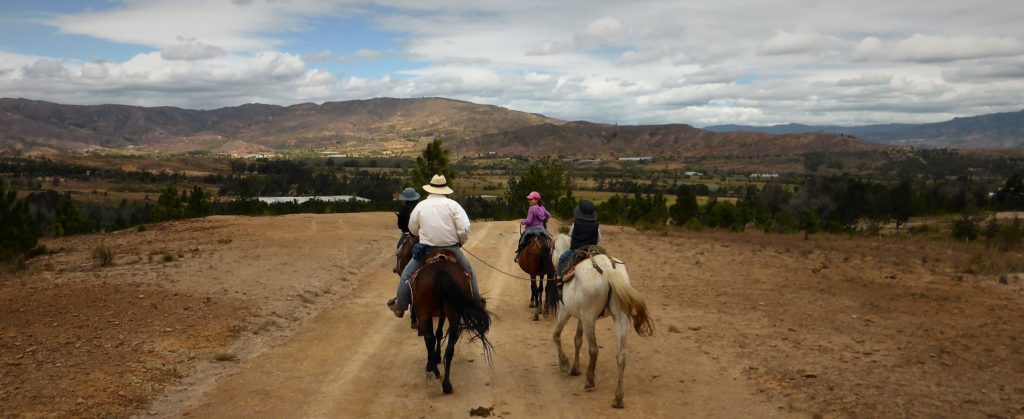
Younger kids will enjoy Gondava for the model dinosaurs and probably the CIP, both offer the chance to do ´dig your own fossil’.
Other fossil sites in Colombia: Fossils can be found in many other parts of the country and some towns have displays. Two of the other internationally-recognised fossil sites in Colombia are:
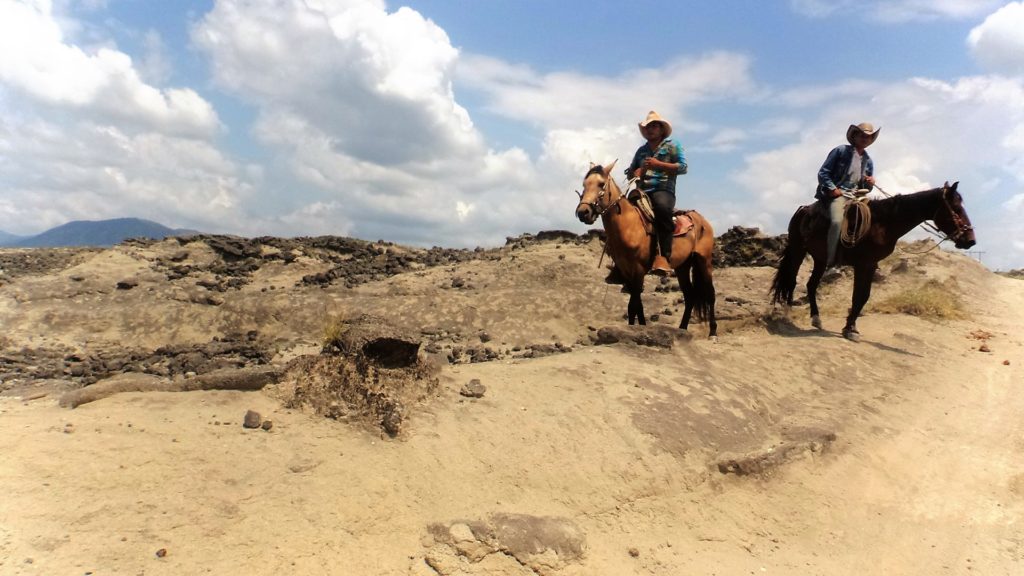
The Tatacoa Desert in Huila is famous for its Pleistocene-era fossils (think ´Sid the Sloth from the Ice Age´), and this rich field extents into parts of Tolima. There is a small fossil museum in Villavieja, close to the Tatacoa Desert.
Cerrejón Mine in La Guajira is producing world-class Palaeocene remains, such as Titanaboa mentioned above and it is probably the most actively studied fossil site currently in Colombia, though not open to the public.
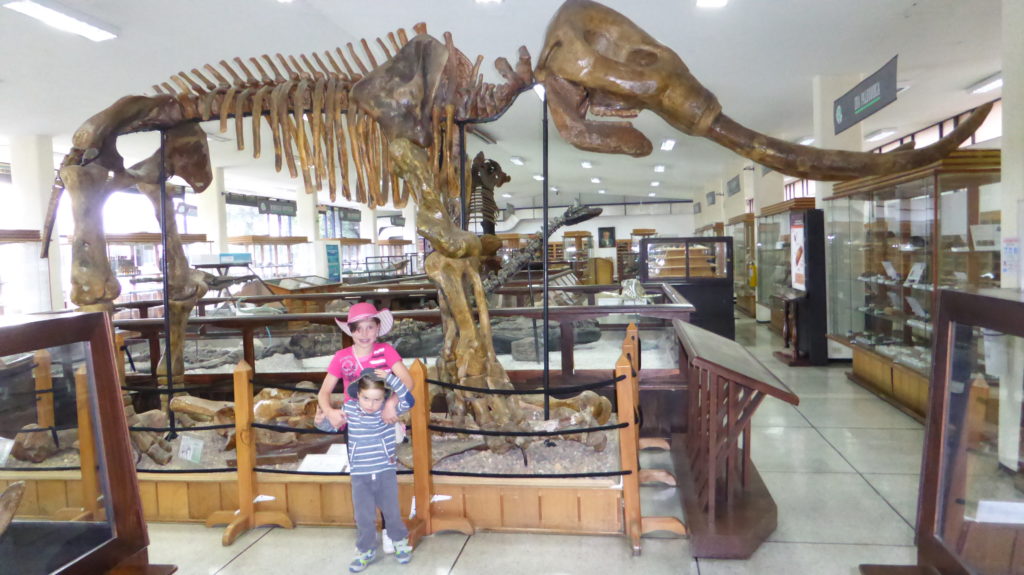
In Bogotá there are good fossils at the Jose Royo y Gomez Geological Museum with complete skeletons of plesiosaurs and Pleistocene mammals (such as megatherium, the giant sloth, and a mastodon), it is part of Servicio Geologico de Colombia institute on the corner of the NQS and Calle 53, Bogota. It is open to the public on weekdays, and entrance is free.
See my post here on visiting this fascinating museum in Bogotá.
Note: it is illegal to buy or sell fossils in Colombia, though you will often find them for sale in villages close to fossil sites.
